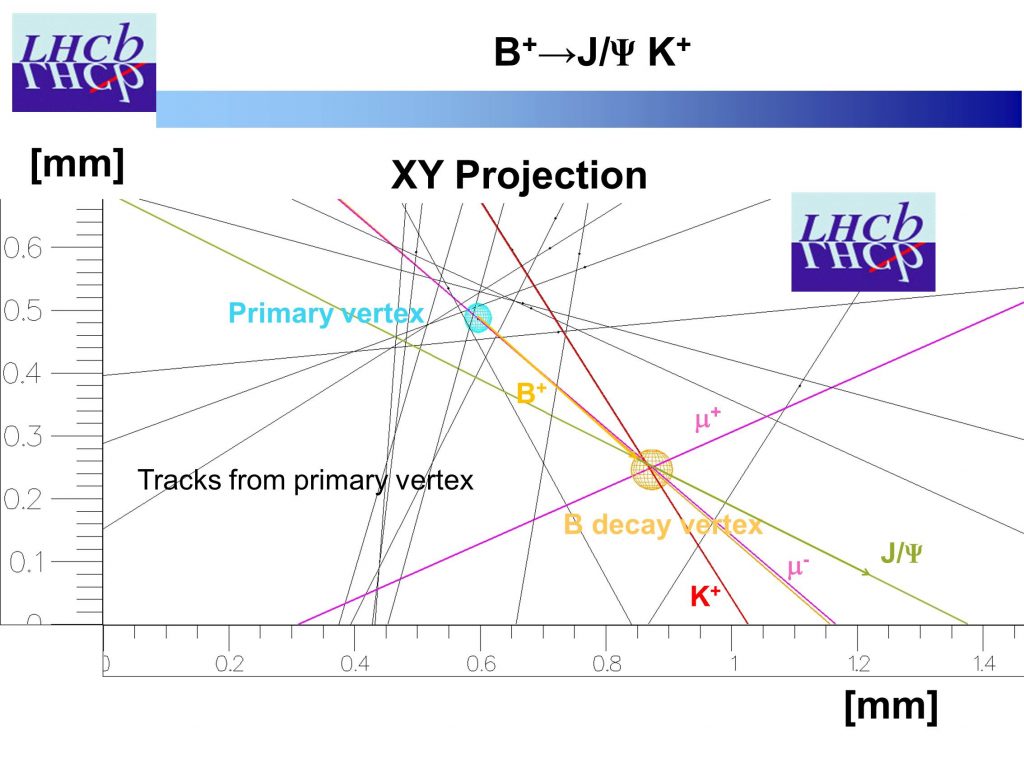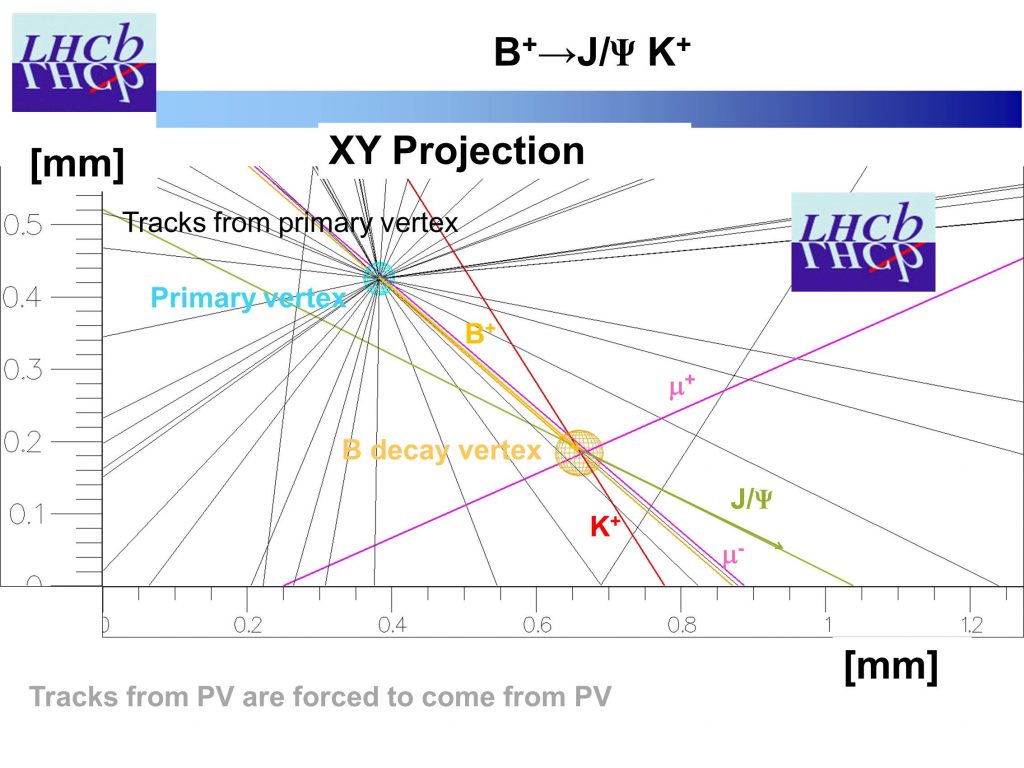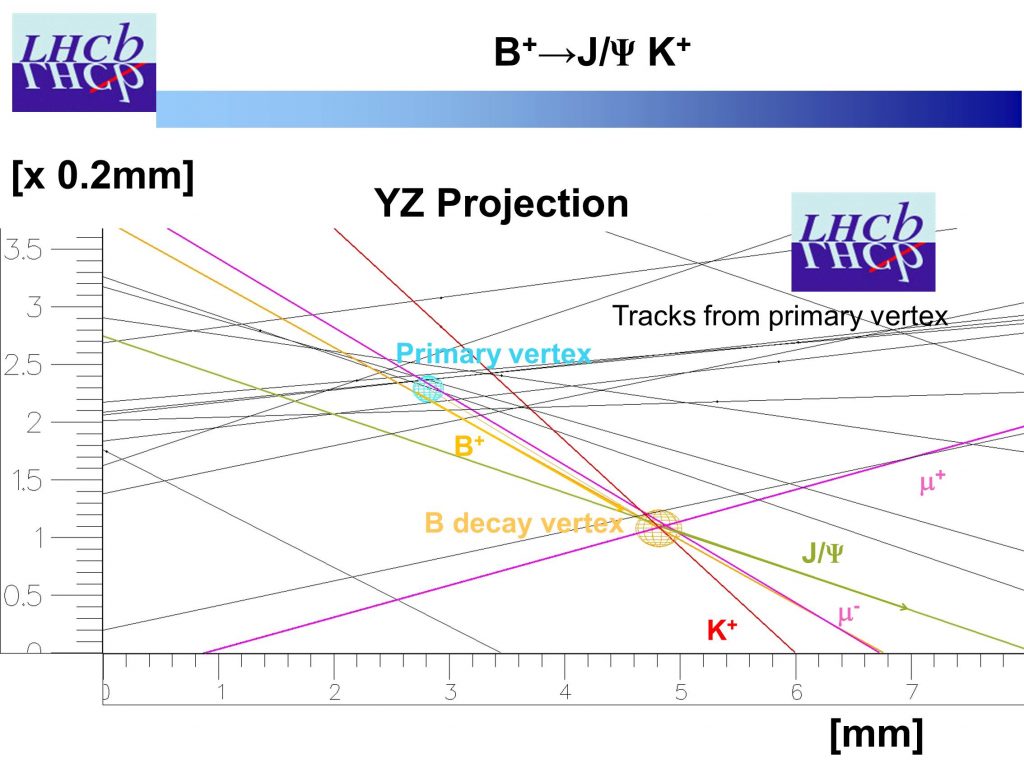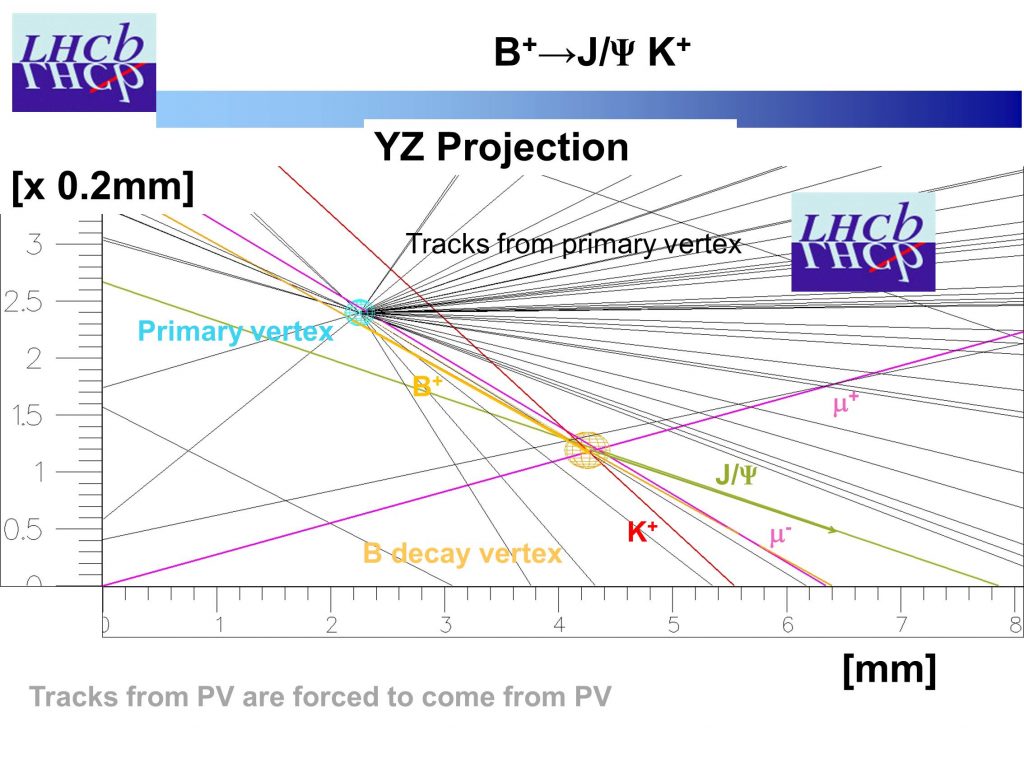LHCb has reconstructed its first Beauty Particle! You can see below a computer view of this event in two projections (images on the left hand side). The Beauty Particle (called B+) is composed of an anti-quark b (that has a very short lifetime of 1.5 thousandth of a nanosecond!) and a quark u. It is produced by the collision of two very high energy protons from the LHC at a location marked as “Primary vertex”, together with many other particles (shown in black). The B+ decays after travelling about 2mm into two particles (called J/ψ and K+) at a place marked “B decay vertex”. The J/ψ particle decays in turn immediately into two long lived particles called μ+ and μ–. The μ+ , μ– and K+ are traversing the LHCb detector where the tracking system is used to reconstruct their trajectories with such a very high precision, that it is clear they do not come from the primary vertex. The fact that the reconstructed tracks do not cross exactly in two points reflects experimental precision of computer reconstruction. The real particle tracks originate at the two vertices. The images on the right hand side show the same event when the tracks from the “Primary vertex” are forced to come from the “Primary vertex”.
click in images to get them in higher resolution
The LHCb physicists have collected about 10 million proton-proton collisions in order to find this first Beauty Particle. The reconstruction of each event is not easy, there are about 100 particle tracks reconstructed in this event, see full event display below.
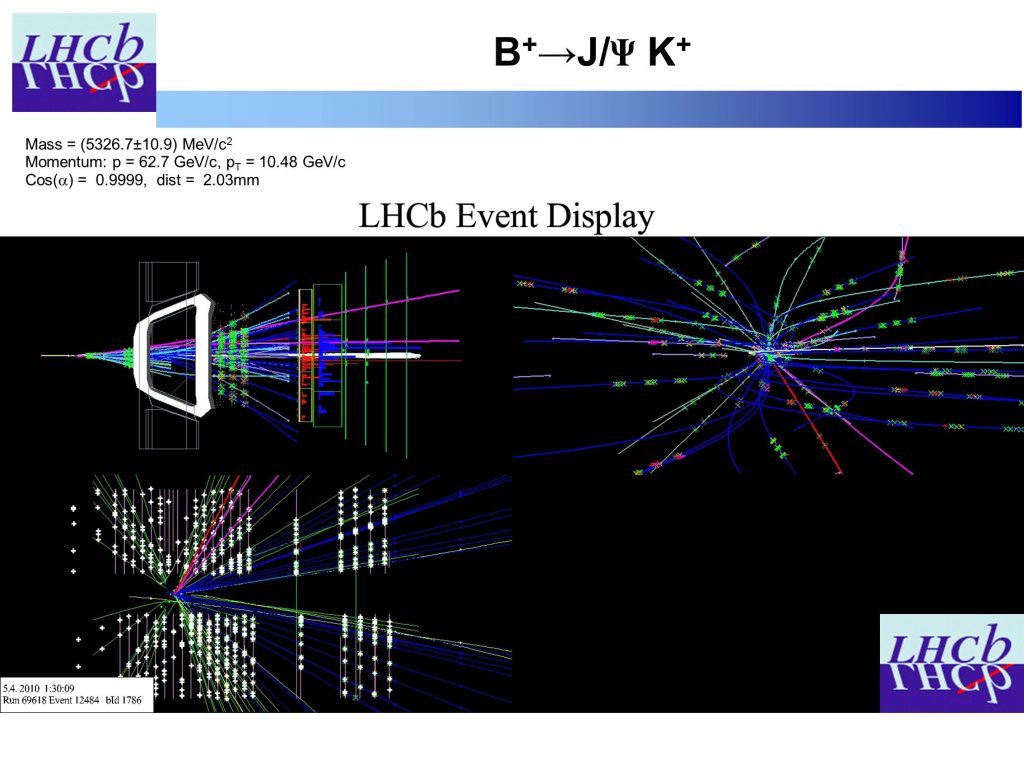
More details: LHCb physicists have calculated invariant mass of μ+ and μ– particles from the “B decay vertex” and found that it correspond to the J/ψ mass, see below invariant mass distribution of all μ+ and μ– pairs with the peak corresponding to the J/ψ decays. The reconstructed invariant mass of J/ψ and K+ is 5.32 GeV, in agreement with to the known B+ mass, 5.5 times higher than the colliding proton mass but 650 times smaller than the colliding proton energy (yes, we can create mass from energy using famous Einstein formulae E=mc2).
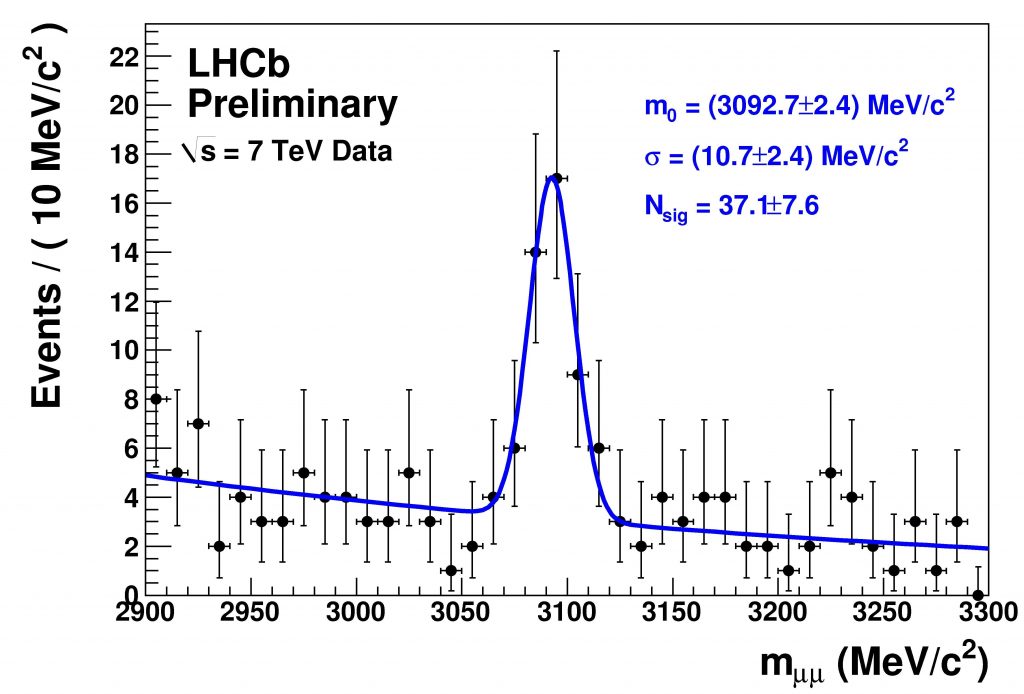
see comments in articles: NewScientist internet, magazine and ZDNet.

